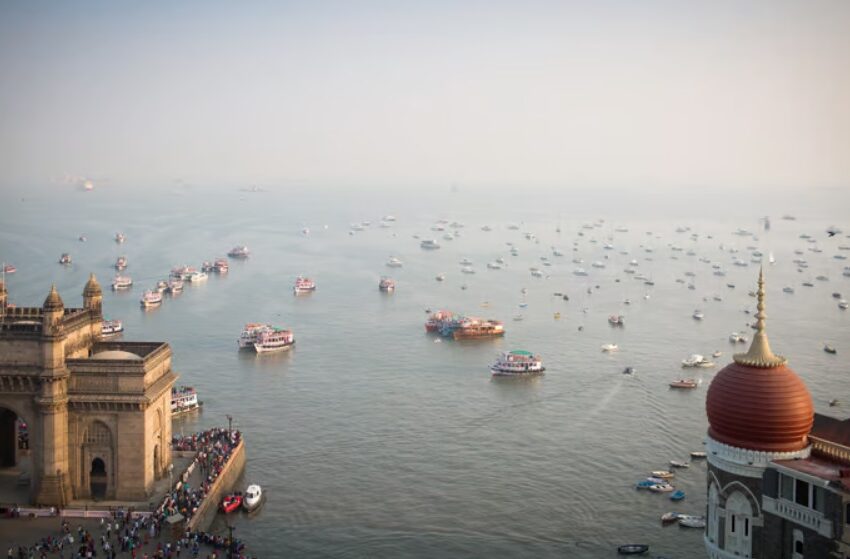
Fabulous, Futile, and Flawed: Unraveling the Dual Realities of Maharashtra’s Economy
Speaking in Nagpur during Independence Day celebrations, Deputy Chief Minister Devendra Fadnavis stated that Maharashtra has become India’s first state to surpass the half-a-trillion-dollar economy mark. He linked Maharashtra’s success to the country’s broader economic growth.
However, according to the state’s economic survey of 2023-24, its current debt stock has crossed a whopping Rs 7 lakh crore and stands at Rs 7,11,278 crore (revised estimates), while the interest due was Rs 48,578 crore. Experts stated that the significant debt burden and interest payments may impact Maharashtra’s ability to allocate resources to other critical sectors.
In the budget, Maharashtra’s gross state domestic product (GSDP) for 2024-25 is projected to grow by 5.5 per cent over 2023-24 revised estimates, reaching Rs 42,67,771 crore, its expenditure (excluding debt repayment) in 2024-25 is estimated to be Rs 6,12,293 crore, representing a 2 per cent increase over the revised estimates of 2023-24.
.The state government’s revenue receipts grew from Rs 2,43,654 crore in 2017-18 to Rs 4,86,116 in 2023-24, while revenue expenditure during this period increased from 2,41,571 crore to 5,05,647 crore. This resulted in revenue deficit turning positive to 0.5 per cent in 2023-24 from a negative of -0.1 per cent in 2017-18.
Additionally, debt repaid by the state will be around Rs 57,198 crore, according to industry experts. Receipts (excluding borrowings) for 2024-25 are estimated to be Rs 5,01,938 crore, an increase of 3 per cent as compared to the revised estimate of 2023-24.
The spending on these areas has shown an increase, with a 9.5 per cent rise in 2018-19, 24.1 per cent in 2019-20, 5.9 per cent in 2020-21, 15.5 per cent in 2021-22, and a slight decrease to 11 per cent and 10 per cent in 2022-23 and 2023-24, respectively. Khana also stated that this upward trend of approximately 56.6 per cent since 2017-18 highlights the state’s struggle to allocate funds towards capital creation. “The fiscal stress is primarily caused by a mismatch between receipts and expenditure,” added Khanna.
Employment Issues Everywhere
Maharashtra, one of India’s most industrialised states, has witnessed fluctuations in employment over the years. The state’s unemployment rate has hovered around 5 to 6 per cent, with the economic slowdown post-pandemic impacting both formal and informal sectors.
While Maharashtra continues to be a hub for industries such as IT, manufacturing and financial services, it has faced challenges in sustaining employment growth in rural areas and traditional sectors like textiles and agriculture. The recent recovery has largely been driven by urban industries, but rural regions still struggle with underemployment.
Notably, the job creation in rural Maharashtra remains a challenge. While programs like the Mahatma Gandhi National Rural Employment Guarantee Act (MGNREGA) provide temporary relief, these are short-term solutions. “Sustainable rural job creation could stem from investments in agricultural productivity, agro-processing industries, and improved rural infrastructure. However, slow implementation of rural development projects and reliance on traditional farming practices have hindered job growth in rural regions,” Bhagat added.
Industry leaders stated that there is a meagre growth expected in agriculture and allied. Presence of 65 to 70 per cent of small and marginal farmers with around approximately 45 per cent of the total cropping area, unprecedented weather conditions leading to either excess or deficient rainfalls had led to a slowdown and decrease in the production of major crops in recent years.
A wide range of credit, irrigation and subsidy schemes already exist but efforts need to be diverted towards ensuring adequate and effective utilisation of these incentives and subsidy schemes and appropriate imparting of skills related to farm mechanisation to small and marginal farmers. Khana mentioned that specific crop and area-related measures need to be undertaken by the state to address declining productivity specifically in cereals, pulses, oilseeds and sugarcane
“If we focus on the budget allocated, rural development, irrigation and flood control, the welfare of SC, ST, OBC, and minorities, education, sports, arts and culture, agriculture, and allied activities have the least budgetary allocation, and police and transport have the highest. The focus needs to be on the highest employment-generating manufacturing sector alongside rural development and irrigation that will build sustained growth for the state,” Khanna stated.
The Great Rural Urban Divide
The concentration of jobs in urban areas has led to significant migration, putting pressure on cities while leaving rural areas underdeveloped. Despite having top educational institutions, there is a gap between academic training and the specific skills required in high-growth industries.
The state’s rural regions are highly dependent on monsoon rains, affecting agricultural output and rural employment. Poor infrastructure in rural areas hampers industrial growth and job creation. Shedding light on how entrepreneurship can play a role in addressing unemployment in Maharashtra, Bhagat added, “Entrepreneurship is a key driver of job creation, especially among the youth. Encouraging startups and SMEs in sectors like tech, agriculture, and services can create new employment opportunities.
Programs like the Maharashtra Startup Week and innovation hubs have laid the foundation, but more government support is needed to expand the entrepreneurial ecosystem. By providing easier access to credit, mentorship, and market linkages, the state can foster entrepreneurship, particularly in non-metro regions.”
Boosting employment in rural Maharashtra requires developing agro-processing industries that can create jobs by adding value to agricultural products. “Offering financial incentives, access to markets, and better infrastructure for micro, small, and medium enterprises (MSMEs) in rural areas can provide non-farm employment opportunities. Investing in rural infrastructure, such as better irrigation systems, roads, and power, can improve agricultural productivity and create sustainable rural jobs,” Bhagat mentioned.

Mumbai: The Financial Capital
As many calls Mumbai, the city of dreams, the city has many things to offer to individuals to make a great career. Since it is considered a land of opportunities, immigrants flock to Mumbai to make a mark in their respective professions which leads to a perennial shortage of supply for housing around business districts.
The most crucial challenge that people who migrate to Mumbai face is finding the right accommodation within a reasonable budget. An individual either has to compromise on the quality of life by settling at a farther location or compromise on the finances by shelling out more money for rent.
The location at which the individual stays determines the other living costs associated as well. It is a tightrope to balance between whether to travel more or to save time. In the initial years, when an individual needs to learn new skills and keep on educating themselves to ensure there is growth in their professional career, costs shouldn’t be looked at in isolation.
Shah added that this suggests that the residents of Maharashtra are more financially savvy compared to other states in the country. The data acts as a significant indicator that people in the state are better positioned to reach important financial milestones like marriage, home ownership, and early retirement.
What Next?
The government’s spending on capital projects has also grown from 1.7 per cent of the GSDP to 3.7 per cent of the State GSDP in 2023-24, though it remains significantly lower than the revenue expenditure of 12.5 per cent of the state GSDP in the same year.
Over time, the state’s debt burden has increased from 1 per cent of the state GSDP in 2017-18 to 2.8 per cent of the state GSDP in 2023-24, as the state has taken on more debt. This has made the state the second-largest in terms of debt burden.
However, there is a need for the state to be more accountable in how it invests these funds, focusing on productive and employment-enhancing sectors, ensuring the full utilisation of these funds, and managing the additional burden of interest payments and loan repayments in future years, Khanna stated. It is also crucial to closely monitor the performance of state-owned enterprises and the productivity of their operations.
Khanna mentioned, “The closure or restructuring of enterprises that are not profitable, monitoring the productivity of staff, and avoiding overstaffing can help reduce government spending, increase the revenue of state-owned enterprises, and improve non-tax revenues for the state.”
From a long-term perspective for the government to improve revenue collection, the state must attract businesses and entrepreneurs. For the businesses to flourish, a state must offer financial and non-financial incentives to entrepreneurs such as a fast-track incorporation process, and zero red tapism. Upstream value addition in Agriculture and Tourism businesses which contribute to 20 per cent of the state’s GDP, creating industry-specific corridors and special economic zones, according to Shah.
Maharashtra’s economy, a tale of the fabulous, futile and flawed, now stands at a crossroads. Its economic success is tempered by substantial challenges. The state’s debt burden and interest payments may limit resource allocation to critical sectors. To achieve sustained growth, Maharashtra must prioritise fiscal responsibility, boost rural employment through agro-processing and entrepreneurship, and attract businesses with incentives.



